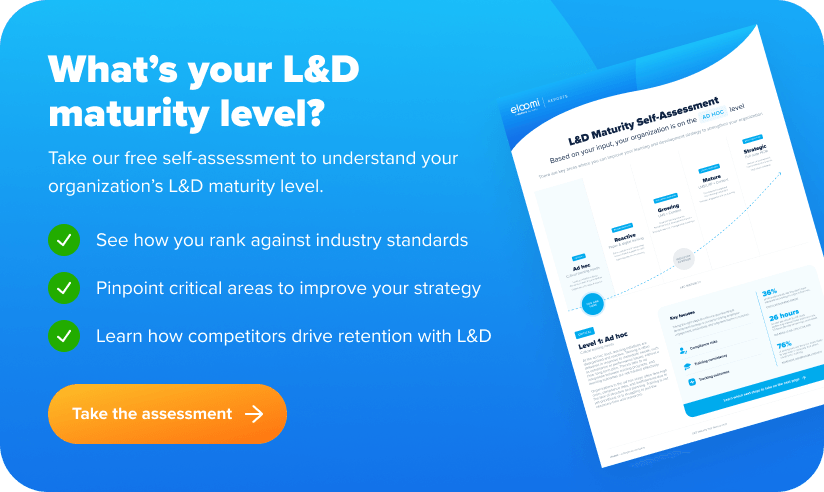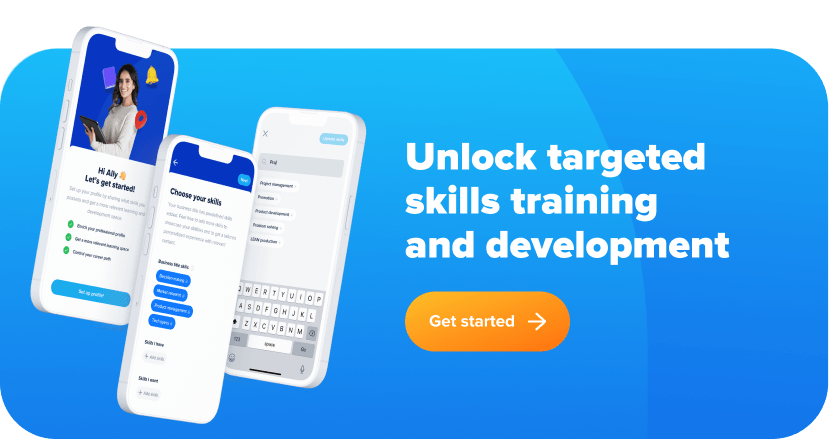What is skill mapping and why use it in the pursuit of growth?
Skill mapping refers to the process of assessing the skills possessed by employees in your organization. It helps you understand the cluster of existing skills available in your company and identify the skill set of every individual. By measuring the expertise level of required skills, skill mapping helps analyze the competency of specific skills concerning your current project or task requirements.
Additionally, it allows you to evaluate the skill levels of team members, understanding their capabilities both individually and as a whole. This evaluation helps determine the skills needed when hiring new candidates and ensures you make informed decisions on employee training programs.
Skills mapping is crucial to deliver successful employee training, especially as skills gaps are on the rise. Gartner research has projected that 33% of the skills in 2019 job postings will be obsolete by 2024. The tricky part is that tackling skills gaps efficiently can’t begin until businesses have answered one deceptively simple question: what skills do you have in your organization today? That’s where skills mapping comes in: a structured visualization of all the skills present in your organization and their levels.

Benefits of skills mapping
Skill mapping is a win-win process for both employers and employees. Employers can create a skills inventory, identify skill gaps, and use data-driven conclusions to determine which individuals need additional training. This process helps build effective employee retention programs.
Skill mapping is also essential for hiring and onboarding. By defining specific skills required in your team, you can pre-plan and organize training programs to enhance employee learning and development. Employees benefit by understanding their strengths and weaknesses, leading to targeted personal growth.
The question is now: what you can & should do with skills mapping?
1. Pinpoint Necessary Skills and Track Progress
Skill mapping provides a clear understanding of the technical and soft skills available within your organization. With skills management software, you can arrange and allocate resources per project needs, track progress, and measure skill levels within your team. This enables efficient task allocation and helps identify the nature of the skills required for specific tasks, ensuring continuous employee development.
2. Identify High-Value Employees and Grow Your Organization
Skill mapping combines employee performance data and personal data to identify individuals with critical skills. By recognizing high-value employees, you can leverage their strengths, make optimal use of their skill sets, and drive business growth. This also supports the creation of a skills inventory, aiding in effective resource allocation and strategic planning.
3. Reveal Skills Gaps and Improve Hiring
Comprehensive visual data from skill mapping helps determine existing skills and identify gaps. Understanding these gaps enhances the hiring process by allowing you to create job roles with specific skill requirements, organize targeted training programs, and efficiently fill positions with suitable candidates. This proactive approach ensures that your team possesses the necessary skills to meet project demands.

4. Enhance Training and Boost Employee Retention
Skill mapping offers valuable insights into employees’ training needs, leading to the development of effective training programs. This targeted training not only fills skill gaps but also serves as a motivational tool, increasing employee satisfaction and retention. By continuously providing relevant training, you ensure that your workforce remains engaged and committed to their roles.
5. Increase Productivity and Competitiveness
By understanding and addressing skill deficiencies through ad hoc training, you can enhance employee performance and maintain consistent productivity. Skill mapping helps your organization stay competitive by fostering continuous learning and growth. Informed decisions based on skill mapping insights enable your team to confidently tackle more challenging projects.
6. Improve Recruitment, Onboarding, and Collaboration
Skill mapping sharpens the recruitment process by identifying the specific skills needed within the company. It also streamlines onboarding and reboarding by highlighting areas for improvement and offering targeted training from the outset. Furthermore, skill mapping promotes a culture of knowledge sharing and collaboration, encouraging cooperation and a constructive feedback environment between employees and managers.
Defining the skills matrix
To get started with skills mapping, you can begin with a skills matrix, which is, in simple terms, a visual representation that describes the abilities of your team and their relevance to your company’s needs. It better helps you understand the actions required to attain your business goals.
The skills matrix can develop and build upon the connection between your business goals and the skills possessed by your team members. Furthermore, it helps you understand what other skills are required in your organization to move forward.
Read More: 3 Strategies To Build A Skills-Based Organization
Why eloomi is the future of skills training
In today’s competitive environment, companies must operate as learning hubs rather than mere salary providers. Employees are attracted to organizations that invest in their future development, It’s not a simple wage raise request; it’s a matter of shared motivation.
So, businesses can’t expect to have their working teams fully engaged when they are not investing in their career. It is as simple as that! McKinsey‘s digital journey exemplifies the importance of upskilling across the entire organization, demonstrating that focusing solely on new hires is not enough for significant progress.
Current employees hold vital chronological knowledge, forming the foundation of every business’s success. Skill mapping is the smartest and most effective way to grow and remain competitive, enabling continuous, satisfactory outcomes for your company and partners.
Furthermore, the best part of skills mapping is that it allows HR and managers to get all the coordinates and numbers to invite employees on a new engrossing quest. However, to reach your destination (goals), you’ll first need a compass (or a map) to get there.
Easy? Well, if you have a digital and user-friendly tool like this one, yes. eloomi Skills offers intuitive skill mapping suitable for every type and size of business. By addressing weaknesses and strengthening your team’s capabilities through a learning experience platform, you can elevate employee skill levels and connect them with relevant training programs.
Start today and map the skills of your employees for business success.







